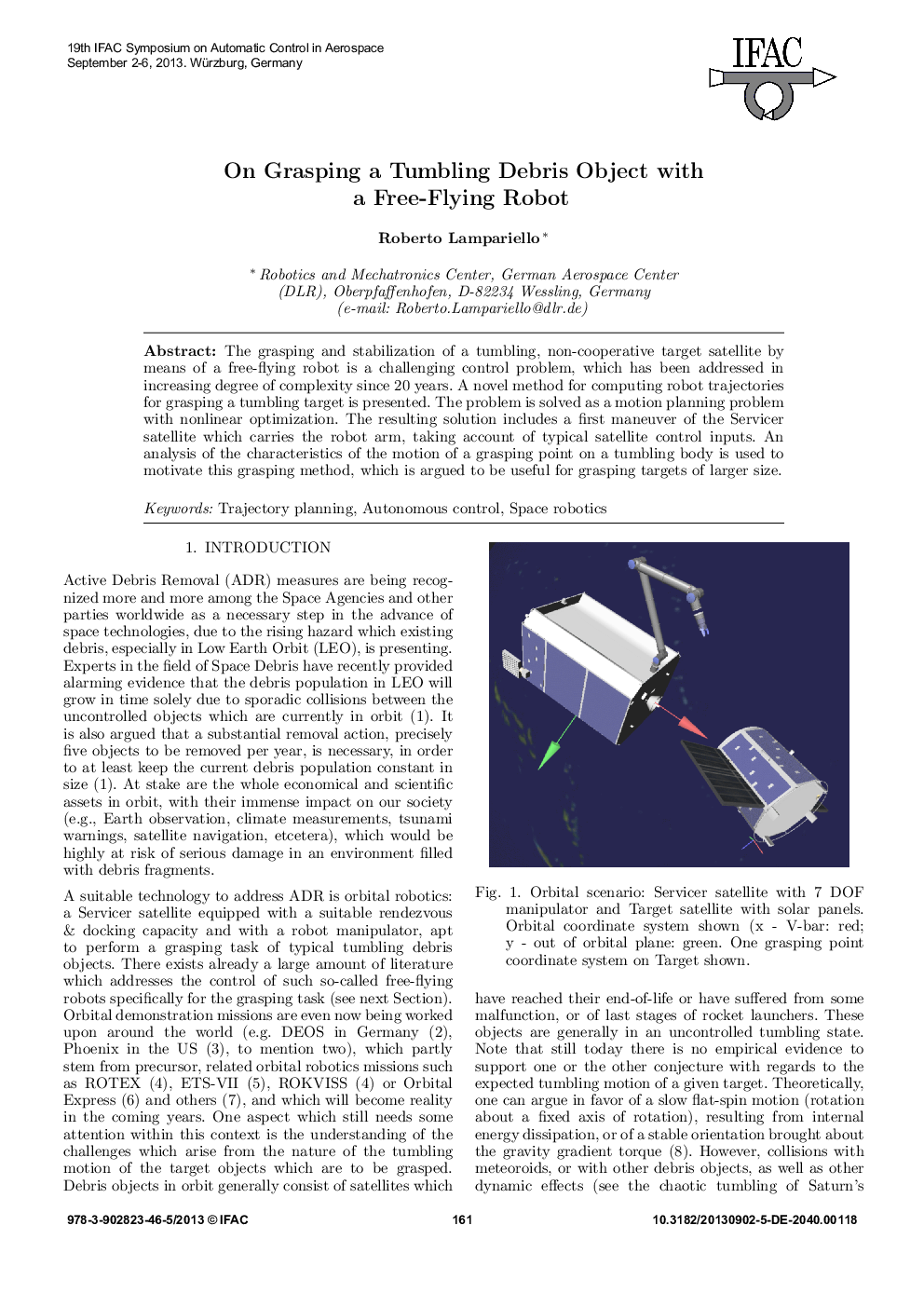| Article ID | Journal | Published Year | Pages | File Type |
|---|---|---|---|---|
| 709153 | IFAC Proceedings Volumes | 2013 | 6 Pages |
Abstract
The grasping and stabilization of a tumbling, non-cooperative target satellite by means of a free-flying robot is a challenging control problem, which has been addressed in increasing degree of complexity since 20 years. A novel method for computing robot trajectories for grasping a tumbling target is presented. The problem is solved as a motion planning problem with nonlinear optimization. The resulting solution includes a first maneuver of the Servicer satellite which carries the robot arm, taking account of typical satellite control inputs. An analysis of the characteristics of the motion of a grasping point on a tumbling body is used to motivate this grasping method, which is argued to be useful for grasping targets of larger size.
Related Topics
Physical Sciences and Engineering
Engineering
Computational Mechanics
